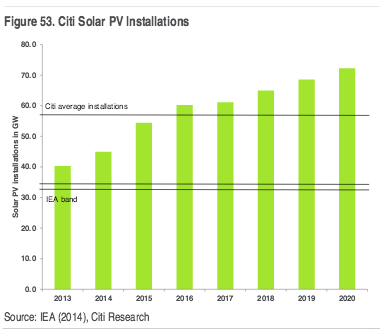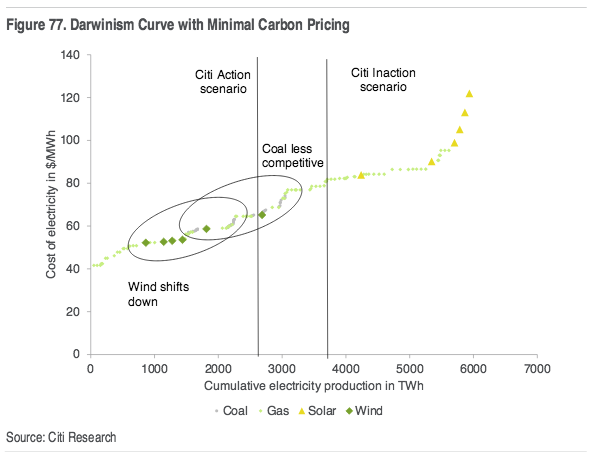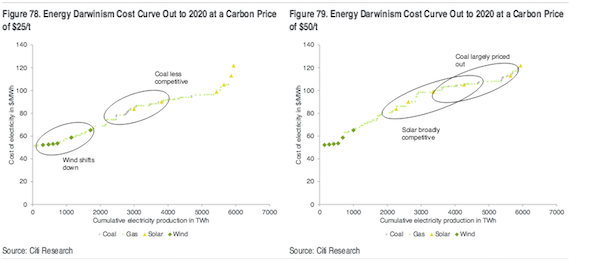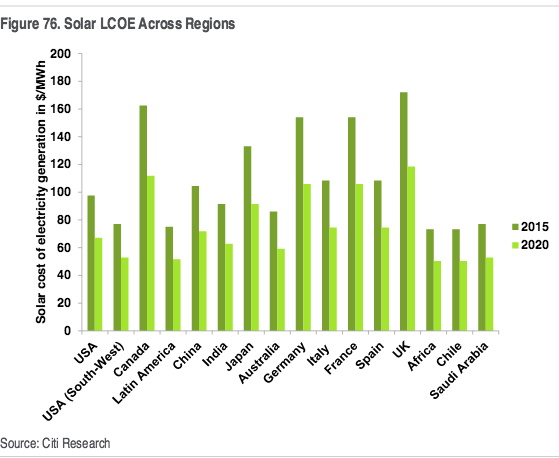The world will need to install solar PV at an average rate of 53GW a year from 2013-2020 as it transforms its energy mix to prevent dangerous climate change, a new report has predicted.
The report from global investment bank Citigroup, Why a Low Carbon Future Doesn’t Have to Cost the Earth, compares the economics of acting, or not, on climate change, and finds that its ‘Action’ scenario – in which governments invest heavily in overhauling their energy markets, transport sectors and industries to a low-carbon mix – results in an undiscounted saving of $1.8 trillion out to 2040.
Energy markets – as the single biggest emitter of greenhouse gases – are, of course, a big focus of the changes, with Citi’s ‘action’ scenario calling for a lot of renewable energy to be added to the global power mix if we are to avoid dangerous climate change, and a lot of that solar PV.
“In 2040 we estimate that 15.4GTCO2e per year is being saved between both our scenarios. Two-thirds of these savings relate to investments into solar PV and onshore wind while the remaining third is due to energy efficiency investments.”
Citi says that a key difference between its forecasts for renewables growth and those from the International Energy Agency (IEA) is the assumed penetration in the electricity mix. In the particular it says, in its Citi “Action” scenario, its forecasts for solar PV deviate significantly from the IEA’s.
“Our granular country by country solar PV forecasts show an average installation rate of 53GW per annum 2013-2020,” the report says. “This compares to 33-34GW installations by the IEA (lower bound New Policy scenario, upper bound 450 scenario).”
Citi says that with the rapid fall in the cost of electricity from renewables it expects solar PV to be competitive with conventional fossil fuels by 2030; “and hence there is theoretically no need for further incentives via a carbon price in the power market alone.”
This is what Citi calls Energy Darwinism – as you can see in the charts below. It means that solar PV is going to get cheaper and cheaper – and with battery technology, more reliable – and beat out traditional energy sources, with or without policy help (although the latter is important out to 2030 if we want to get on top of that thing called climate).
© 2015 Solar Choice Pty Ltd



